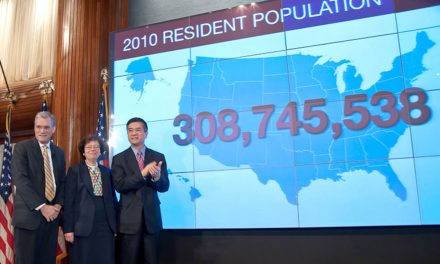
The law creating the Temporary Assistance to Needy Families program (TANF) turned 23 years old on August 22, and it has not improved with age.
At the national level and here in Wisconsin, TANF is now serving only a very small fraction of the families who are living in poverty and may be eligible for assistance. In Wisconsin, if we compare the share of families with income below the federal poverty level who got direct cash support in 2017 to the ratio in 1996 when TANF began, 52,000 fewer families are now getting that assistance.
The erosion of direct financial assistance for people trying to climb out of poverty is one of the reasons for the growing economic divide that is holding back our state. That divide is particularly harmful to people furthest from opportunity – those in rural parts of the state and communities of color.
The TANF law created a block grant to states that replaced the Aid to Families with Dependent Children program (AFDC). States use the block grant funding for many different purposes. Although it’s supposed to be used to help low-income families, much of it is going for administrative costs and to supplant the tax revenue that states formerly appropriated to help finance various forms of public assistance (such as the Earned Income Tax Credit in Wisconsin).
A shrinking amount of TANF funding is used to provide direct financial assistance to families who participate in work and training programs, such as Wisconsin Works (W-2). According to an analysis by the Center on Budget and Policy Priorities, the portion of total federal and state TANF funding spent for “basic assistance” in 2017 was just 23% nationally and only 15% in Wisconsin.
Financial assistance for families can and should be a key part of TANF that provides critical support to not only help cover parents’ and children’s basic needs today, but also to help create stability enabling children to thrive in the future. And it’s a means of providing valuable training and employment skills by enabling parents to participate in subsidized work programs. However, fewer and fewer families are getting these forms of assistance from state expenditures of TANF funding.
In 2019, the number of families receiving W-2 cash benefits (primarily through work programs) has averaged less than 5,500 per month, which is an all-time low. Adding in the support the state provides to caretakers who are filling in for parents, and the total number of Wisconsin households who are receiving cash assistance is now roughly 16,000 per month. That’s only a fifth of the number of families receiving assistance from AFDC in the early 1990s. A dramatic decline in the number of families receiving cash assistance would be a positive if the number of families with economic need actually declined, but that is not the case.
A better way to look at the caseload trend over time is to compare the number of families receiving direct financial assistance to the number with income below the poverty line. The graph above (created by the Center on Budget and Policy Priorities) shows that that out of every 100 Wisconsin families with children living in poverty in 2017, only 20 received cash support from either W-2 or our state’s other assistance for caretakers.
That ratio has fallen by about 75% since Congress created the TANF block grant in 1996. As noted above, the number of low-income Wisconsin families receiving cash assistance would have averaged at least 52,000 higher per month in 2017 if the ratio had held steady. Several factors relating to the design and implementation of TANF have contributed to its failure to serve very many of the nearly 86,000 Wisconsin families with very low incomes in 2017.
- The funding level has been frozen since TANF was created, and the fixed appropriation level has lost nearly 39% of its value over the past 23 years.
- Much of the funding in Wisconsin is being spent on administrative costs, and the state’s contracts with the private entities that administer W-2 enable them to increase their profits by finding ways to deny assistance to families.
- States are able to use federal TANF funds in ways that replace money the state had previously spent from its own coffers, as illustrated by Wisconsin’s use of TANF funds to substantially reduce state support for the Earned Income Tax Credit.
- The Wisconsin legislature has chipped away at W-2 benefits, and has created additional barriers to accessing those benefits.
Federal lawmakers could and should change the structure of TANF so more of the funding is used to serve families who need the support that TANF can provide to improve their current circumstances. We need to advocate for federal policy change. In the meantime, state policymakers must examine the historical contexts in which these policies were created and make changes that support our lowest income parents across the state as they work to support themselves and their children.
Governor Evers’ budget would have used TANF funding to make a number of improvements in assistance for low-income Wisconsinites. His proposals included repealing the tougher time limits on W-2 participation that were imposed in 2015, allowing W-2 placements to include more education and training, and extending the W-2 work exemption for caretakers of newborn infants. However, all of those proposals were deleted from the budget bill by Republicans on the Finance Committee before the committee could even debate them on the merits.
According to numerous studies, having access to a stable income can improve children’s well-being and also their educational and economic outcomes. Yet TANF-funded programs are providing direct financial assistance to a shrinking share of Wisconsin families in poverty. After 23 years of experience with TANF, it is time for state and federal lawmakers to take steps to meet the TANF goal of children being cared for by their families.
Jon Peacock
Originally published on wisconsinbudgetproject.org
Help support the Wisconsin Budget Project with a donation. The organization is engaged in analysis and education on state budget and tax issues, particularly those relating to low-income families. It seeks to broaden the debate on budget and tax policy through public education and by encouraging civic engagement on these issues.














